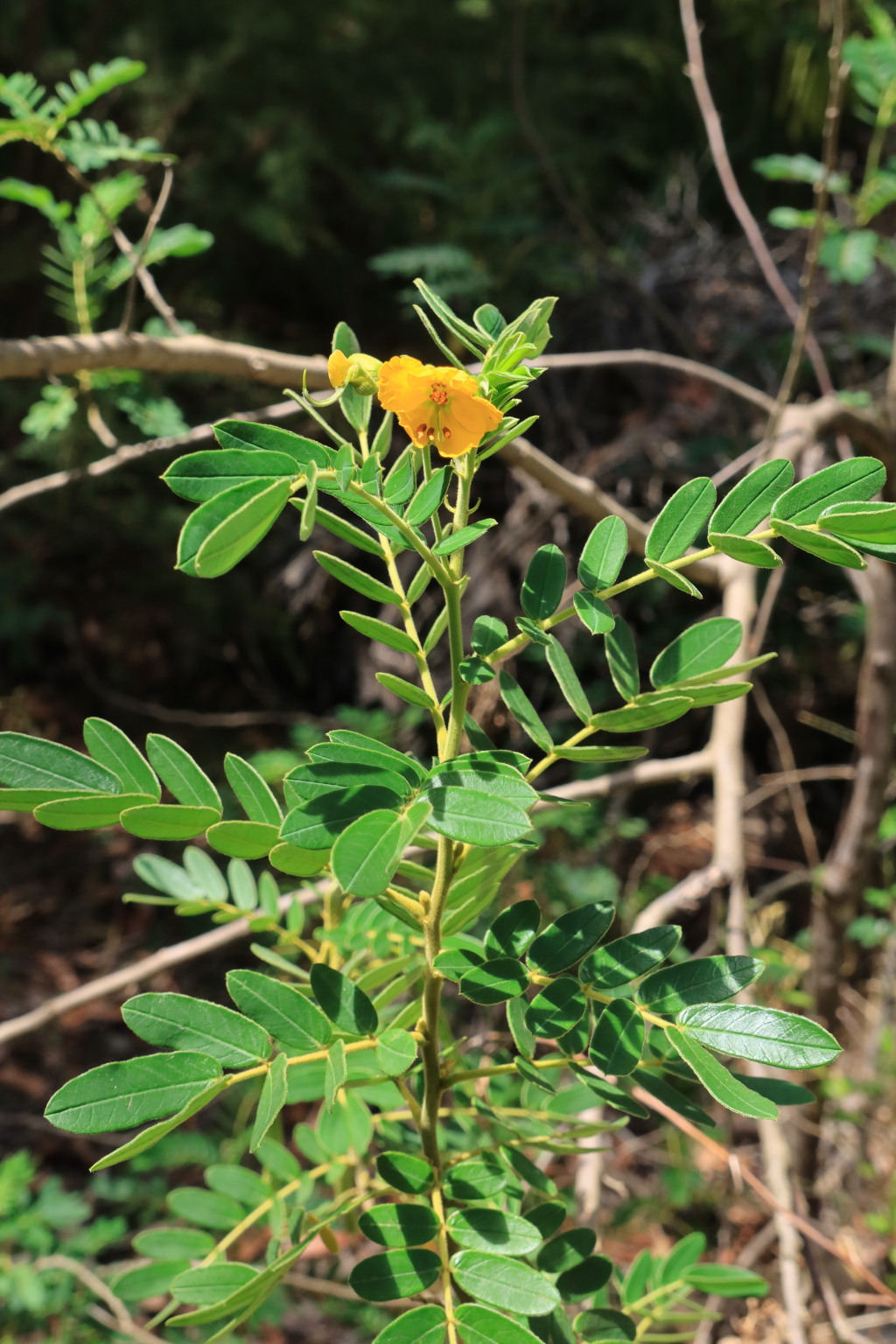Senna multiglandulosa
(Jacq.) H.S.Irwin & Barneby Downy SennaShrub to 4 m high; stems tomentose. Leaves 6–8 cm long; gland present between lowest 2–4 pairs of leaflets; leaflets in 6–8 pairs, linear to lanceolate, 20–40 mm long, 8–12 mm wide, apex usually obtuse, mucronate, upper surface sparsely hairy, lower surface densely matted with yellowish hairs, margins revolute. Peduncles 2–3 cm long; pedicels 10–12 mm long; sepals to c. 10 mm long; petals to c. 15 mm long; fertile stamens 7, largest 3 anthers c. 7 mm long on 6–8 mm long filaments, 2 of the 3 lower stamens with long C-curved filaments. Pod cylindric, 6–8 cm long, 6–8 mm diam., pubescent; seeds several, more or less obovoid, c. 4 mm long, brown, shiny. Flowers mostly autumn, spring.
VVP, GipP, OtP, WaP, EGL, HSF. Also naturalised SA, NSW. Native to Central and South America. This cultivated species has apparently become naturalised near Portland, Lakes Entrance and at Bete Bolong near Orbost.
Jeanes, J.A. (1996). Caesalpiniaceae. In: Walsh, N.G.; Entwisle, T.J., Flora of Victoria Vol. 3, Dicotyledons Winteraceae to Myrtaceae, pp. 658–663. Inkata Press, Melbourne.
 Spinning
Spinning



